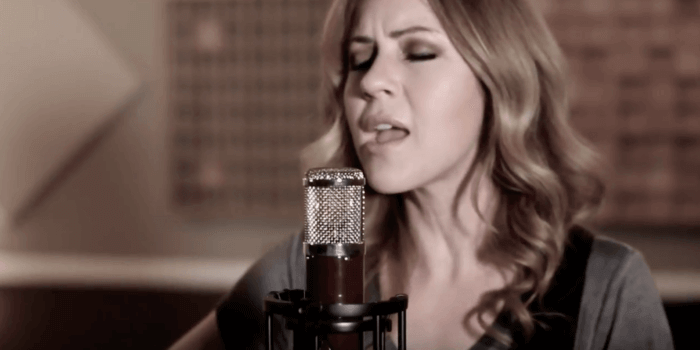Top 5 studio microphones for recording vocals at home
Image Credit: Vanguard Audio Labs
“What’s the best microphone for recording vocals?” is often the first question on any budding musician’s mind. If you’re truly looking for the best microphones for recording vocals, let me tell you that you’ll need to spend BIG BUCKS.
No, really, I’m talking $1000. I get it, you’re disappointed. But let me reassure you that we’ve comprised this list of five microphones for recording vocals at home that won’t break the bank at all.
We’ve brought together what we think are the best dynamic mics and best condenser microphones for recording, and we know the right microphone for you is here.
After all, there are a lot of specifications to consider when choosing a microphone. If your room is very small, you may want a dynamic microphone rather than a condenser. Because condenser microphones are very sensitive, small rooms may incur the proximity effect which In short, the proximity effect is where a microphone falsely registers an increase in low frequencies because it’s too close to the sound source. And there are cardioid pick up patterns to think about, diaphragm size, durability, transportability… and it can all get a little much when all you want is a microphone for recording your vocals.
Shure SM58 – the best dynamic microphone for recording vocals
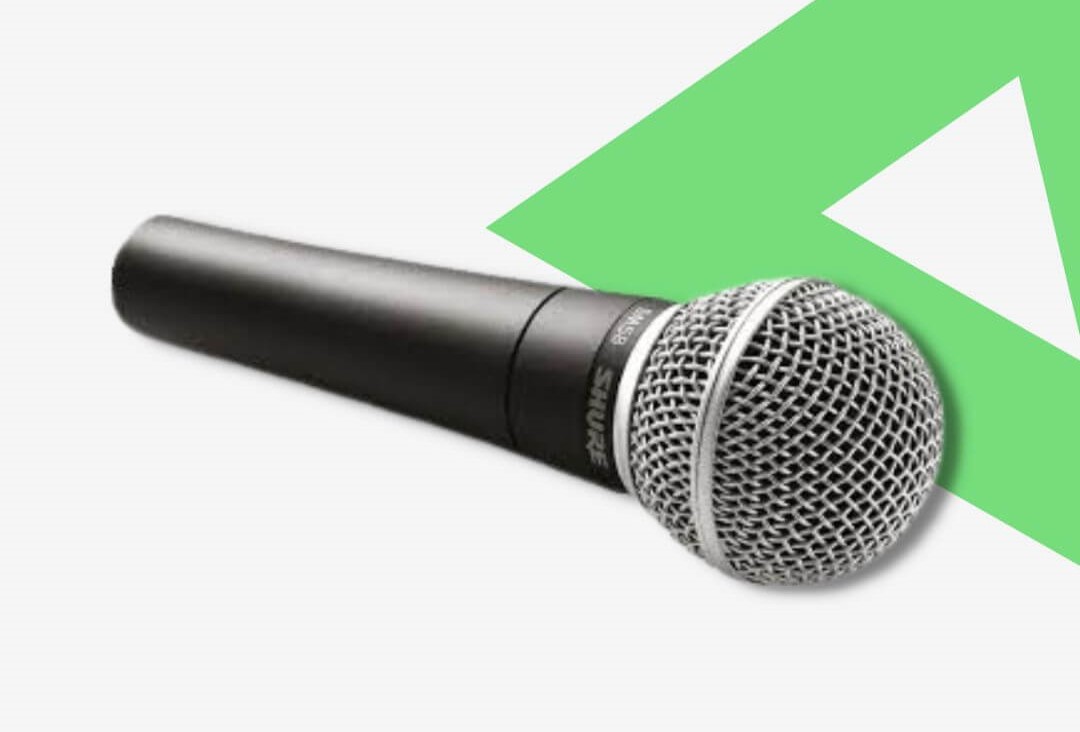
- $89
- Transducer type: Dynamic
- Frequency Response: 50 Hz to 15 kHz.
- Polar Pattern: Cardioid
- Output Impedance: 300 Ω
- Sensitivity: -56.0 dB
- Max SPL: 180 dB SPL
- Weight. 33 kg
The SM58 is arguably the best microphone for recording vocals at this price, and that’s why it’s so notorious. It’s a dynamic microphone with a cardioid pickup pattern, and both novices and veterans alike use the SM58 because it’s just so good at what it does. In fact, if you take a look at some photos of popular singers on stage you’ll find they’re holding an SM58 most of the time.
Moreover, the SM58 is fantastic at recording loud sound sources like vocals due to its resistance to feedback thanks to its cardioid pattern and its durable dynamic capsule. The grill and all-around metal construction present a microphone that’s built for transportation, while its frequency response does any vocals a favor with its midrange recording emphasis.
The design of the SM58 is all about function before appearance. You’ll need an XLR cable input to use the microphone which any audio interface will give you. Beneath the metal grille is a spherical filter which mitigates some of the harshnesses of plosives, sibilance (S’s and T’s) and fricatives (F’s or V’s). Despite this, you’ll also need an external pop filter to really tame any plosives like B’s and P’s. And inside the casing lies an internal shock mount which reduces vibration-induced noises and interference too.

With a frequency response of 50Hz-15kHz, you can rest assured an SM58 will capture your vocals elegantly. The frequency response is actually tailored towards vocals in this way! Furthermore, the lack of sub-bass sensitivity (20 Hz top 40 Hz) will help towards mitigating any proximity effect that we mentioned earlier. Oh, and it also means you won’t always need to bring in a high-pass filter either. And with a low-impedance value of 150ohms, as dynamic mics tend to have, you won’t need phantom power or excessive gain staging to record anything at all.
There is one overarching flaw though, and it’s down to the fact that it’s a dynamic mic. Condenser microphones are excellent for capturing intimate details when coupled with phantom power. Dynamic microphones just don’t specialise in this arena, so maybe our next listing is the one for you.
The Shure SM58 is one of the best microphones in its class. Its frequency response (50Hz-15kHz) is tailored to highlight vocals, hence the bass attenuation from 40-100Hz.
Sound Guys
Rode NT1-A – the best condenser microphone for beginners
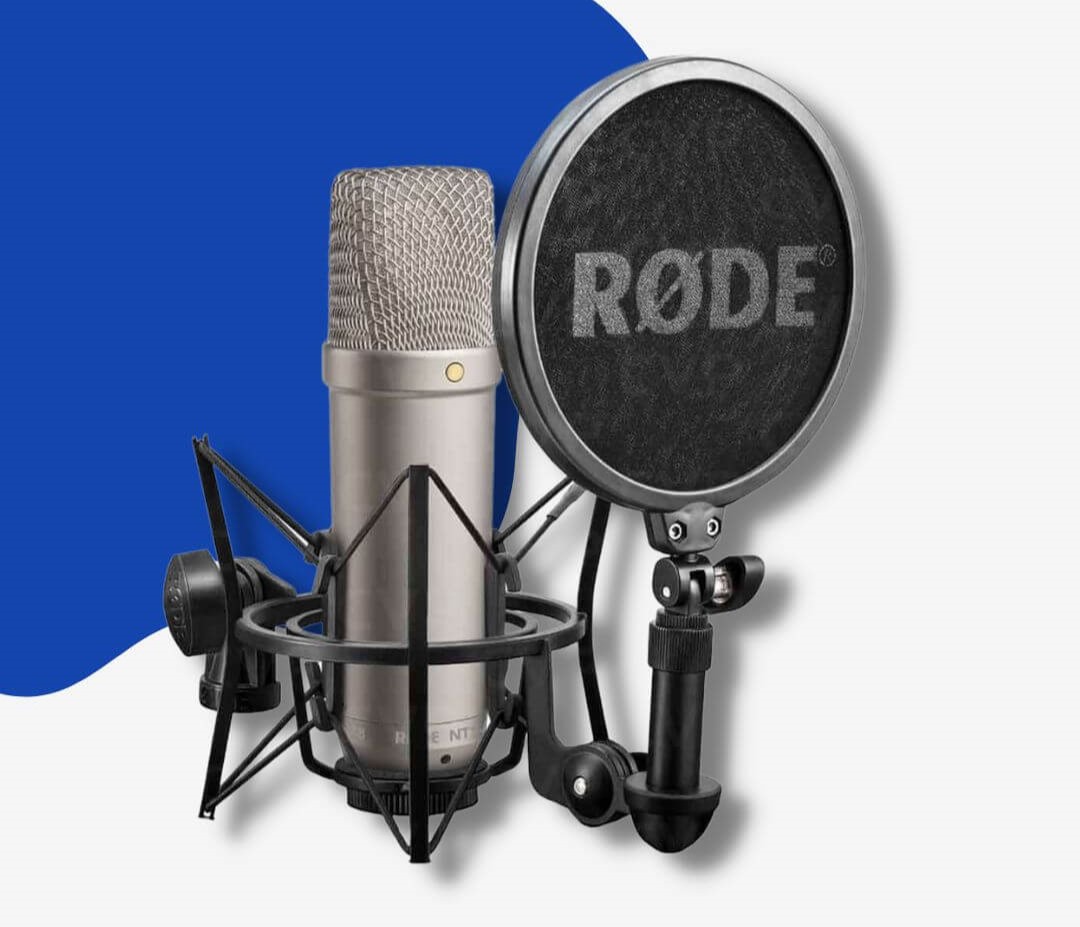
- $228
- Transducer type: Large-diaphragm condenser (25mm)
- Frequency Response: 20Hz – 20kHz
- Polar Pattern: Cardioid
- Output Impedance: 100 Ω
- Sensitivity: -31.9 dB
- Max SPL: 137 dB SPL
- Weight. 32.6 kg
Please welcome what may well be the most renowned large-diaphragm condenser microphone: the Rode NT1-A.
It’s a great choice for a home or professional studio. Its premium build and easy-to-set-up functionality usually make it a number one choice for high-level engineers! Though setting up the Rode NT1-A is pretty simple, you will need phantom power as it’s a condenser microphone.
The Rode NT1-A has a large 1-inch capsule/diaphragm. The microphone measures (H)190mm x (W)50mm x (W) 50mm and weighs 326g. As a result, you may find the sheer weight will ruin the locking mechanism on cheap mic mounts! Despite its tough and seemingly durable build, we would advise against dropping it (both deliberately and accidentally) because condenser microphones are far easier to break than dynamic microphones.
For recording vocals and guitar, you need to look no further. Its cardioid polar pattern and flat frequency response focuses on your performance and captures every detail with no alterations. However, we would recommend getting an external pop filter. Then you are leaving no room for plosives and harsher sibilance to creep through. And additional phantom power via an audio interface will be necessary with every use. As for self-noise, the microphone only produces about 5dB which isn’t noticeable while recording.
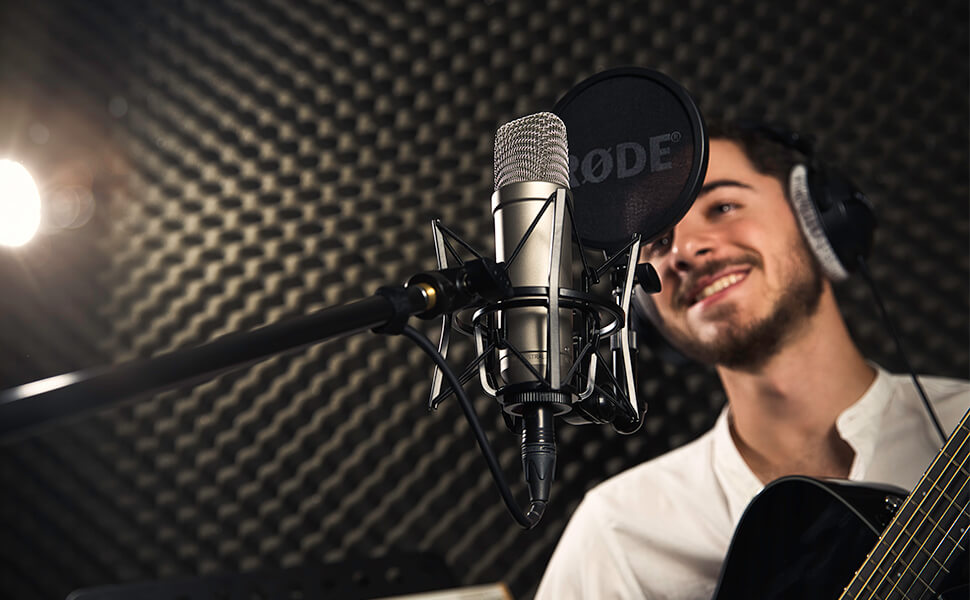
In regard to the actual setup of the microphone, you’ll need an XLR cable as with the Shure SM58 (and every microphone on this list), but Rode does include a 6m XLR cable and a carry case too! As for phantom power, +48V is usually the norm but 24V will provide enough power too.
With phantom power, the NT1-A has a sensitivity of -31.9dB for picking up quiet sounds! In contrast, the max SPL/loudest sound the Rode NT1-A can register without distorting is 137 dB! Coupled with its frequency response, this range will register the quietest whisper and loudest vocal with no problem.
Everything about the Rode NT1-A makes it perfect for recording vocals. From it’s high sensitivity to the fact that it only produces 5dB of self-noise, which is super low so as not to interfere with your recordings.
Sound Guys
AKG C414 XLII – the best condenser microphone for recording vocals
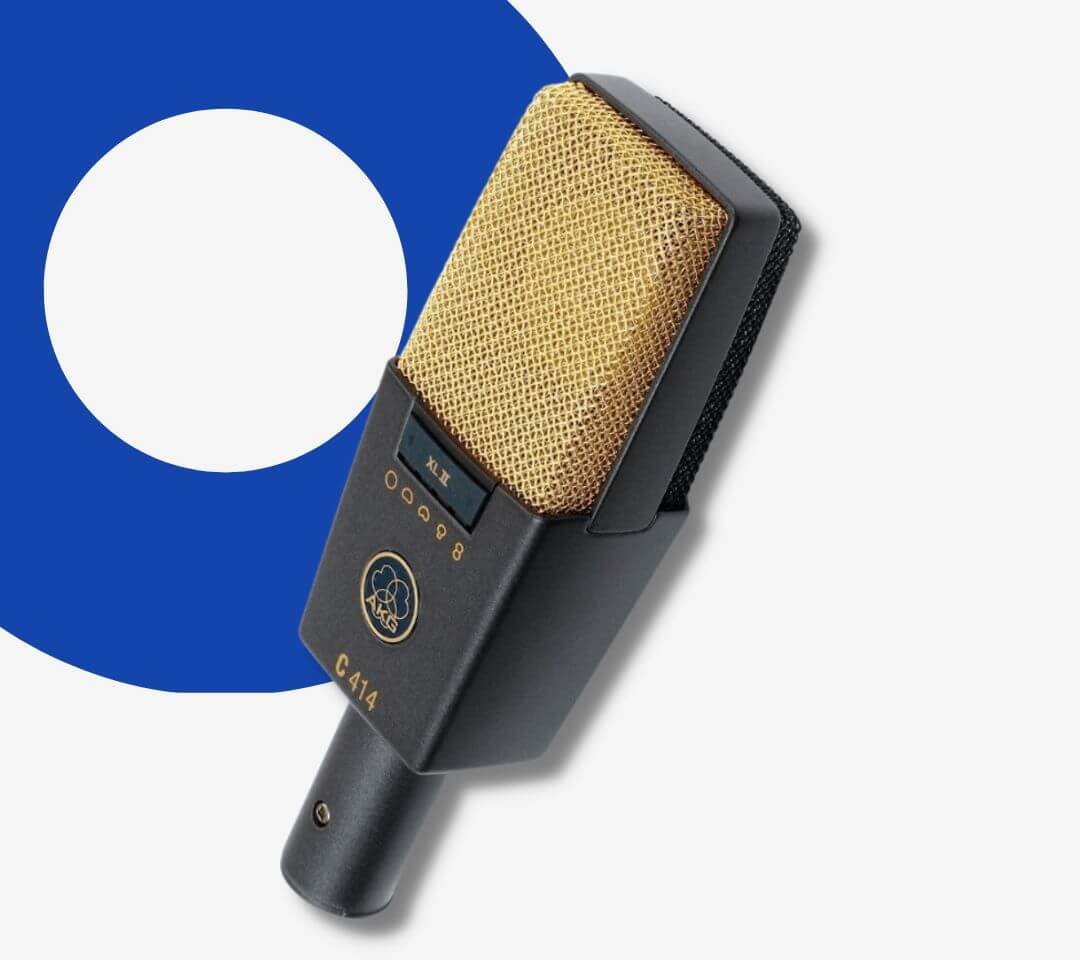
- $990
- Transducer: Large-diaphragm condenser (25mm)
- Frequency Response: 20Hz – 20kHz
- Polar Pattern: Cardioid, Omnidirectional, Hypercardioid, Figure of Eight, super-cardioid
- Output Impedance: 200 Ω
- Sensitivity: -97 dB
- Max SPL: 140 dB SPL
- Weight. 300g
AKG’s C414 is a large-diaphragm condenser microphone is another widely used microphone. In fact, it’s become a studio standard the world over.
Despite the microphone’s basic design, its gold grille gives the C414 XLII a flashy appeal all the same. Its base is solid but the gold grille is a little fragile. Of course, behind the grille sits a CK12 nylon condenser capsule which is to thank for the golden sound of the C414. Around this capsule sits an elastic mounting which minimizes vibrations or any force that could damage it. And like the NT1-A, this microphone may have a bulky base but dropping it will be a big mistake.
On the C414’s front panel is a selectable switch for choosing between nine pickup patterns! These nine include the five primary polar patterns and four hybrids! And beneath the switch is a light strip which indicates which pattern you select in addition to casting a visual cue when peak overloads and clipping occurs. The LED switches from green to red when even a hint of distortion occurs! As a result, the AKG C414 XLII is a versatile recording weapon with a plethora of uses.
And on the rear of the C414 sits two switches with LED lights too. The left switch is a pre-attenuation control enabling you to select one of 4 pre-attenuation settings (0 dB, -6 dB, -12 dB, -18 dB). In short, you can adjust the settings to accommodate for louder sound sources. And on the right is a low cut filter. Switch between 0, 40, 80 and 160hz and roll off any unneeded low end.

The capsule in this microphone is very sensitive. As a result, you’ll more than likely notice some low-end boominess if you record vocals too close to the microphone head due to the proximity effect. So if rolling off low-end frequencies doesn’t work, you’ll need to back up from the mic while raising your input level to accommodate for the distance. However, this may well lead to the mic capturing more room noise – so if you haven’t got a properly treated room then you may want to consider a different microphone for vocals.
It’s because of its high-end clarity that the C414 has become well-known. Compared to its sister mic, the C414 XLS, the XLII is more sensitive to high-end for recording vocals. You can expect a polished sound brimming with detail and clarity! However, the XLII will add a bit of colour to your vocals. Not necessarily bad, but not everyone wants colouration. If this is you, the Rode NT1-A is a more transparent microphone.
Additionally, there is a slight scoop in the frequency response at 1-2khz, a boost at 5kHz, and another dip between 6-7 kHz. The 6-7 kHz dip captures the range of sibilance so it acts as a filter while the 5kHz boost creates more clarity and presence.
The ability to switch between polar patterns on the C414 is what makes it so incredibly useful, but it is the sound quality and character of this microphone which ultimately seals the deal. The C414 has become renowned for its high-end clarity and sound character.
Audio Gearz
Vanguard V13 Valve Condenser
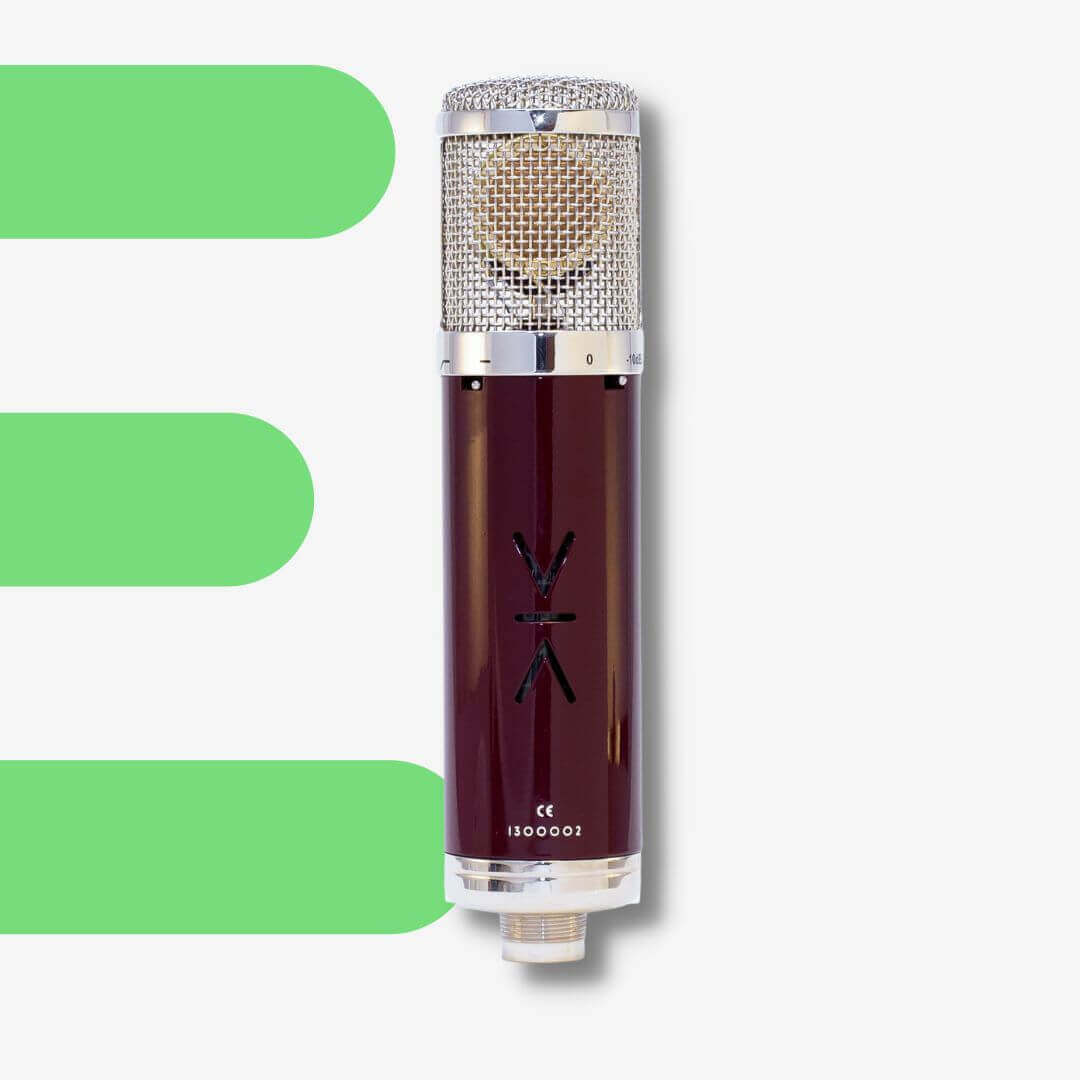
- $926.39
- Transducer: Large-diaphragm condenser (34mm)
- Frequency Response: 20Hz – 20kHz
- Polar Pattern: Cardioid, Omnidirectional, Hypercardioid, Figure of Eight, super-cardioid + 4 hybrids
- Output Impedance: 200 Ω
- Sensitivity: -35 dB
- Max SPL: 134 dB SPL (144 dB with pad)
- Weight. 480g
The Vanguard V13 features a large-diaphragm valve condenser and, like the XLII, nine switchable polar patterns. The microphone also has a 125Hz switchable high-pass filter too. Furthermore, the V13 has a -10dB switchable pad for adjusting sensitivity. And to make this bulkier microphone easier to transport, it has a handy flight case. You’ll find a mirrored V air vent on the rear of the body which cools the valve. Moreover, it’s on the rear where you’ll find the high-end roll-off and -10dB sensitivity switches.
The microphone power supply supports both 110V and 240V power inputs. It’s here that you’ll find the switch which enables you to select one of the nine polar patterns too.
What separates this microphone from the rest of our list is its 7-pin XLR connectivity rather than the classic 3-pin XLR. 7-pin XLR connectors are very specific for some valve condenser microphones and connect the microphone to its power supply.
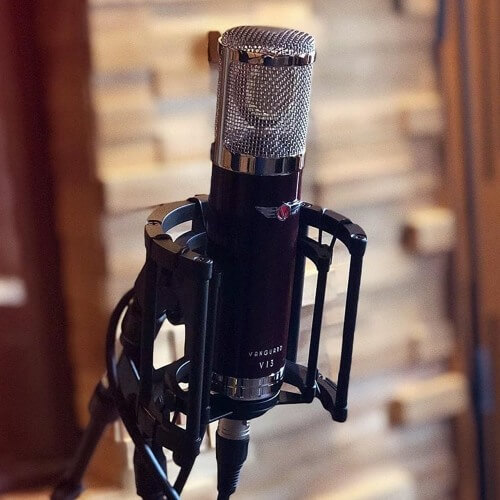
A pronounced low-end with smooth high-end presents a clean frequency response. Additionally, the mid-range is strong too and pushes vocals forward. This is perfect for mix engineers as the V13 helps keep vocals afloat against guitars in a mix.
Of course, the choice of nine polar patterns presents multiple recording options. With a figure of 8 pattern, any voice directly in front of the capsule is more present than those at the side and the low-end is also more pronounced. This adds to what we were just discussing about vocals being very present. A more present low-end adds even more weight to vocals in a mix too!
Sennheiser MD421 II
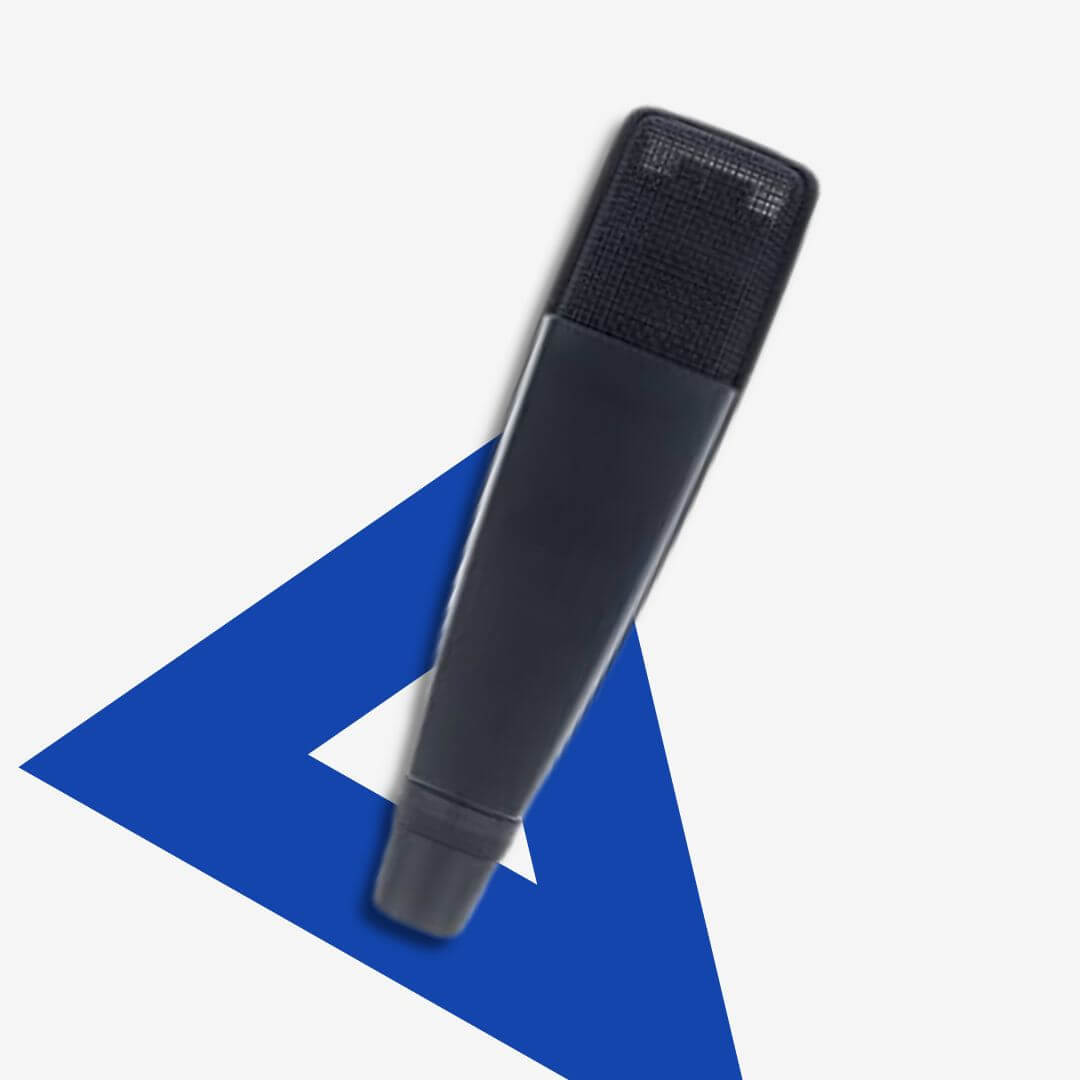
- $399.95
- Transducer: Dynamic
- Frequency Response: 30Hz – 17kHz
- Polar Pattern: Cardioid
- Output Impedance: 200 Ω
- Sensitivity: -74 dB
- Max SPL: approx. 160 dB
- Weight. 385g
The final microphone on our list is the award-winning Sennheiser MD42 II. Its sound and reputation precede it in any professional studio environment. Its robust steel basket and hardy enclosure present a microphone with a fair bit of durability too! And due to its dynamic transducer, it’s ideal for recording loud vocals or other loud sources too.
The MD42 II captures sound in a transparent fashion. You’ll find the 5 position low-end roll-off switch to be extremely handy and flexible when dealing with potential proximity effect issues too. As a result, you can make sure your microphone is primed and ready for any sound source. Enlarge or reduce the size of the cardioid pattern with this control and have full control over what it captures. Rest assured that all internal electronics have been subject to extreme quality control for ensuring a professional field generation and response!

The frequency response stretches from 30 Hz to 17 kHz. Now, this may be a little underwhelming for some but for recording vocals it’s perfect. This frequency has a refined focus and removes any chance for low-end muddiness in the sub-range. Despite all the adjustments the mic allows you to make, it’s not overly sensitive out of the box anyway. So you can feel free to record loud sound sources like guitar amps in addition to vocals! As a result, the Sennheiser MD42 II is great for handling high SPLs!
